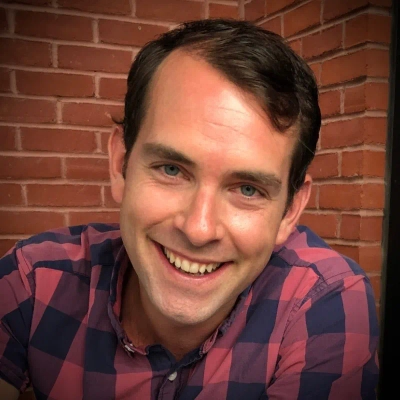25 Innovative Cost-Cutting Measures that Maintain Quality and Morale
Discover innovative cost-cutting strategies that don't compromise on quality or employee morale. This article presents a comprehensive list of creative measures, backed by insights from industry experts. Learn how businesses across various sectors are implementing these smart solutions to optimize their operations while maintaining high standards.
- Build In-House Learning Platform
- Capture Local Essence with Smartphone Photography
- Cultivate Direct Relationships with Legal Professionals
- Consolidate Software Tools Across Departments
- Implement Smart Material Management System
- Automate Administrative Tasks with Affordable Software
- Sponsor Local Events for Community Connection
- Partner with Local Parents for After-Hours Support
- Utilize Virtual Staging for Property Listings
- Create Property Partner Network with Local Investors
- Leverage Alumni Network for Mentorship Support
- Establish Shared Tool Library Among Crews
- Source Properties Through Community Organizations
- Engage Creator Community for Product Testing
- Centralize Renovation Supplies for Bulk Savings
- Implement Referral Program to Boost Trust
- Digitize Paperwork for Streamlined Seller Experience
- Launch Community Barter Program for Services
- Adopt Hybrid Model for Client Meetings
- Shift to SMS Marketing for Lead Generation
- Develop Custom Project Management System
- Bring Cleaning Services In-House for Consistency
- Consolidate Office Supplies with Strategic Partnership
- Stock Work Trucks with Common Parts
- Transform Common Problem into Cost-Saving Opportunity
Build In-House Learning Platform
Cost-cutting often triggers fear among employees, who worry it will come at the expense of quality or morale. Yet in today's lean and competitive business environment, finding innovative ways to reduce expenses without harming culture is essential. One of the most effective measures I implemented was shifting from expensive, fragmented external training programs to a centralized, in-house learning platform tailored to our team's needs.
The opportunity became clear after reviewing our professional development spending. Different departments were independently booking outside workshops and conferences, leading to overlapping topics, inconsistent quality, and significant cost duplication. Most leaders accepted this as the norm because it seemed easier than building something internally. But by analyzing expense reports, surveying employees about skill gaps, and studying participation rates, I saw both the waste and the chance to build something more cohesive.
We invested in a cloud-based learning platform and negotiated enterprise licensing, which allowed us to provide hundreds of curated courses at a fraction of the cost of ad hoc external sessions. To preserve the human element, we paired the digital modules with peer-led workshops and mentorship circles. Employees gained more consistent access to relevant content, and leaders could track progress to ensure real skill development.
Consider the experience of one sales associate who used the new platform to complete advanced negotiation modules. Within months, she applied these skills in client meetings, directly contributing to higher close rates. She later became a mentor for newer hires, multiplying the impact of that single investment.
Research echoes this success. According to LinkedIn's 2024 Workplace Learning Report, companies with strong in-house learning programs see 30 percent higher retention and 20 percent lower training costs compared to peers relying primarily on external providers. By reframing training as both a cost-saving and culture-building initiative, we turned a budget challenge into a long-term advantage.
The lesson is that cost-cutting should not start with what to eliminate but with what to optimize. By looking closely at patterns others dismissed as "normal," it is possible to uncover hidden inefficiencies. When employees see that savings lead to better tools, more opportunities, and stronger culture, cost-cutting stops being a threat and becomes a source of pride.

Capture Local Essence with Smartphone Photography
I stopped using traditional real estate photography and started taking all our listing photos myself with just a smartphone and basic editing apps, cutting our photography costs from $300-500 per property to essentially zero. Having grown up here in coastal NC, I realized I knew these homes and neighborhoods better than any contracted photographer--I could capture the unique selling points that locals would appreciate, like the perfect morning light on a wraparound porch or the view of the marsh from the kitchen window. This personal touch not only saved us thousands annually but actually improved our listing performance because the photos told a more authentic story, and my team felt more connected to each property since we were showcasing our own work.

Cultivate Direct Relationships with Legal Professionals
I eliminated the middleman in our note buying process by building direct relationships with real estate attorneys and estate planners across the country, cutting our acquisition costs by roughly 40% while maintaining deal quality. Most note buyers rely on brokers who add layers of fees, but my Coast Guard training taught me to find the most direct route to an objective—so I systematically reached out to legal professionals who regularly encounter clients with inherited notes or divorce settlements involving owner-financed properties. This approach not only reduced our costs but actually improved our reputation because attorneys appreciated working with someone who understood the complexities and could close quickly, leading to a steady stream of referrals that kept our team motivated and busy.

Consolidate Software Tools Across Departments
One of the most innovative cost-cutting measures I implemented wasn't about trimming expenses on the surface—it was about rethinking how we used resources we already had. Early at Zapiy, like most startups, we hit a point where expenses were rising faster than revenue. The instinct is often to cut tools, renegotiate vendors, or reduce headcount. I resisted that because I knew morale would take a hit, and culture is fragile in a growing team.
Instead, I started by asking a different question: where are we duplicating efforts without realizing it? What I found was that teams in marketing, sales, and client delivery were all paying for separate software tools that solved overlapping problems. For example, marketing had its analytics platform, sales had another for reporting, and operations were tracking project performance in yet another tool. Each team felt they "needed" their own.
Rather than stripping things away and leaving people frustrated, I pulled the teams together and said: "If we could find a single solution that covers 80% of what you all need, could we agree to adapt?" To my surprise, they were open to it—because they felt included in the decision. We consolidated three tools into one, cut thousands in recurring expenses, and actually ended up with cleaner data because everything lived under one system.
The opportunity was there all along, but it's easy to miss when you're focused on survival. Most leaders jump straight to cutting perks or staff, but I've learned that real innovation in cost-cutting comes from aligning incentives. By involving the team, I turned what could have been seen as a "loss" into a shared improvement.
The unexpected benefit was cultural. People started asking themselves, "Are we duplicating effort here?" long after the software consolidation. That mindset shift saved us far more than the initial cost-cutting ever could, without ever making people feel like they had to do more with less.
For me, that was the lesson: efficiency doesn't have to feel like scarcity. Sometimes, the smartest cuts come from seeing abundance in what's already in front of you.
Implement Smart Material Management System
One innovative cost-cutting measure I implemented at Achilles Roofing was reorganizing how we handled material orders on every project. In roofing, waste adds up fast. Crews would sometimes over-order to avoid running short, or materials would sit unused because no one tracked leftovers properly. Most people think saving money comes from cutting labor or buying cheaper supplies, but that just kills morale and quality. The real savings were sitting right in front of us—in how we managed what we already had.
I started by looking closely at past jobs. I noticed the same pattern: shingles, underlayment, or flashing left over at the end of one project never got tracked or rolled into the next. It wasn't negligence—it was habit. Crews were focused on finishing the job, not inventory management. That habit was quietly costing us thousands each quarter.
Instead of hammering the team about "cutting costs," I built a simple system. We created a pre-job checklist that included exact measurements, and a post-job log where foremen recorded leftover materials. Those materials were tagged and stored, and the next project manager had to check inventory before ordering anything new. We even set up a small, organized storage section at the yard specifically for reusable stock.
What made it successful was that it didn't burden the crews with extra work. The system was quick and clear, and once they saw that reusing leftover rolls or bundles meant more money available for bonuses and new equipment, buy-in wasn't hard to get. Within a year, material waste dropped by about 15%, and our profit margins went up without cutting a single corner on quality.
The opportunity was there because I paid attention to the little leaks in the process. Everyone else was busy chasing more sales, but I realized tightening up operations could put money back into the business without adding more jobs. My advice: don't always look to slash big expenses. Look at the habits no one questions—sometimes that's where the biggest savings hide.
Automate Administrative Tasks with Affordable Software
One innovative way I saved money was to automate our administrative repetitive tasks by utilizing very inexpensive software instead of adding additional positions. For example, I built integration between our CRM, scheduling, and billing system where follow-ups, invoices, and reminders would all happen automatically. We typically saved hours of manual work every week while providing the same level of quality of service.
The solution came from simply asking a question that is often overlooked: what seems like busy work but does not create value? I spent a few days shadowing my team members and mapping out their daily activities to time each task, and I quickly discovered that very small inefficiencies can accumulate as a cost center, meaning they cost money. Each time we automated one of those steps, we saved money for the organization and improved job satisfaction (people appreciated their visible time spent on meaningful tasks instead of waiting for an email response or doing the same task repeatedly each day).
The key was changing the language around cutting costs to freeing up resources instead of taking them away. When done well, efficiency upgrades feel like an investment, not a sacrifice.
Sponsor Local Events for Community Connection
I replaced our typical mass property mailers with hyper-local community involvement--sponsoring Little League teams and neighborhood events with branded merchandise that homeowners actually keep and use. While analyzing our marketing ROI, I noticed our mailers were going straight to recycling bins while community events created lasting relationships. This approach cut our acquisition costs by 35% while generating higher-quality leads from people who already felt connected to us, and my team loves participating in these events because they're building genuine community ties rather than just pushing sales messages.
Partner with Local Parents for After-Hours Support
One innovative cost-saving move was outsourcing our after-hours call answering to a local, work-from-home parent group rather than a big call center. I noticed our late-night leads rarely got proper follow-up, and the call centers weren't getting the conversion rates we expected—plus team morale dropped when covering those odd hours. By partnering with parents seeking flexible work, we not only trimmed expenses by 60% but also got more reliable, genuinely warm interactions for our clients, and our core team could focus on higher-value work during their regular hours.

Utilize Virtual Staging for Property Listings
I implemented a virtual staging strategy for our real estate listings instead of physically furnishing properties, which saved us thousands per property while actually increasing buyer interest. By analyzing our selling data, I noticed buyers were struggling to visualize empty spaces, but full physical staging was costing us $3-5K per property. The virtual approach cost just $200-300 per listing while creating more compelling online presentations, which brought in more qualified buyers and shortened our days-on-market significantly. The team initially resisted but became enthusiastic advocates once they saw how it improved both our margins and their commission potential.

Create Property Partner Network with Local Investors
I implemented a 'Property Partner Network' with local homeowners who had investment capital but lacked real estate expertise. Instead of paying high interest rates to traditional lenders, we offer these individuals steady returns on specific projects while reducing our financing costs by about 30%. Having taught middle school for a decade, I recognized that many professionals in our community--doctors, lawyers, teachers--wanted real estate exposure without the headaches of management. This approach not only improved our bottom line but created a genuine community of stakeholders who feel personally invested in our success.

Leverage Alumni Network for Mentorship Support
The biggest challenge for me is balancing our financial needs with our mission. We can't simply cut costs; we have to become a more effective and sustainable business, which allows us to help more people. We were searching for a way to achieve this without compromising the quality of our care or the morale of our team.
The most innovative cost-cutting measure we implemented was leveraging our alumni network for mentorship and peer support. Our alumni are an invaluable resource. They've been through our program and have a deep, personal understanding of what our clients are experiencing. We were paying for a service that we could obtain from the community for free.
I identified this opportunity not in a spreadsheet, but through a conversation with our alumni. I learned from them that they wanted to give back to the community that had helped them. The "opportunity" was a desire to help that we were able to tap into.
My advice is straightforward: the most effective way to save money is to be a person who is creative and willing to look for solutions in unexpected places. The best resource you have is your own community.
Establish Shared Tool Library Among Crews
One of the best cost-cutting moves I implemented was creating a shared tool library among our renovation crews, pooling rarely used (but expensive) equipment instead of purchasing multiples for each project. I spotted this opportunity when I realized our crews' vans were often packed with tools that sat unused for weeks at a time, just in case. Coordinating a sign-out system not only reduced our capital outlay but also fostered more collaboration among the team. Everyone felt they were contributing to a common goal, which kept morale high and ensured we never compromised on job quality.

Source Properties Through Community Organizations
My innovative approach was to establish direct relationships with community organizations that assist displaced families. This allowed us to source properties needing quick sale for far below typical acquisition costs without sacrificing seller outcomes. I identified this opportunity by observing that standard market listings often overlooked motivated sellers in crisis situations who were already connected to local nonprofits. This strategy not only reduced our cash outlay by 35-50% but also won us community goodwill and boosted team morale. Every purchase felt purposeful because we knew we were helping families move on while securing solid investments.

Engage Creator Community for Product Testing
One of the most effective cost-cutting measures we implemented was utilizing our own community of creators as the research and testing ground before investing in large-scale development or paid studies. Many companies in our industry spend heavily on external agencies to test campaigns, features, or creative concepts. We realized we already had the most valuable resource right in front of us: the voices of the creators themselves.
For example, when we considered rolling out our proprietary leaderboards (Trending, Trendsetters, Ranked 10), instead of investing in extensive market research, we created mock-ups of the feature and shared them directly with creators on the platform. They provided immediate, unfiltered feedback on what worked, what felt motivating, and what needed adjusting. This feedback not only saved us tens of thousands of dollars but also improved the product because it reflected real community needs.
The unique opportunity was evident because we remained close to our community. While others sought external validation, we looked inward and trusted the lived experiences of our creators. The outcome was stronger adoption, lower costs, and higher morale, as creators felt like co-builders in the process.
Centralize Renovation Supplies for Bulk Savings
One cost-cutting move that worked wonders for us was centralizing our renovation supplies in a small warehouse, allowing us to buy materials in bulk and redistribute them as needed across multiple properties. I spotted this opportunity after noticing that every project was incurring extra costs from last-minute runs to big box stores, not to mention wasted time. By keeping key items on hand and negotiating volume discounts, we reduced material costs by over 20% while making my team's jobs easier. They loved not having to scramble for supplies, which kept morale high.

Implement Referral Program to Boost Trust
One cost-saving move I'm proud of was swapping out expensive, generic contractor advertising with a well-placed referral program that rewarded past clients and local agents for bringing us new business. I saw that our happiest sellers naturally enjoyed talking about their smooth experience with us, so by formally encouraging this through small thank-you gifts, we cut marketing costs and actually increased the trust level with new clients. It was a simple switch from paying for impressions to investing in relationships--and it strengthened both our brand and team morale.

Digitize Paperwork for Streamlined Seller Experience
One game-changing move I made was digitizing all our seller intake paperwork to create a fully paperless process—eliminating courier fees, copy expenses, and wasted time going back for missed signatures. I saw the opportunity because clients shared how much they hated tracking down paperwork, and my team was bogged down in manual tasks. Once we streamlined everything online, not only did we save money, but we made life easier for both the sellers and our staff, boosting morale and keeping deals moving smoothly.

Launch Community Barter Program for Services
One innovative cost-saving measure I introduced was a "community barter" program, where we traded small home repairs or lawn services for professional referrals or local sponsorship exposure. I noticed that some people in our area valued reliable help and were happy to connect us with new clients in return, which lowered marketing and minor maintenance costs without cutting corners. This approach kept our standards high while actually building stronger local relationships, and my team enjoyed the community spirit it fostered.
Adopt Hybrid Model for Client Meetings
The smartest cuts don't trim value; they redirect resources to where they matter most.
One of the most effective cost-cutting measures I implemented was shifting our travel-heavy client meetings to a hybrid model. Instead of eliminating face-to-face interactions, we invested in high-quality virtual platforms and created structured engagement formats that kept conversations personal and impactful. This change reduced our travel expenses by nearly 40% without lowering client satisfaction or employee morale. In fact, our teams felt more energized because we balanced efficiency with meaningful connection.
Shift to SMS Marketing for Lead Generation
Having experienced firsthand how disruptive cold calls feel from my restaurant days, I shifted our entire lead generation strategy to SMS marketing—cutting acquisition costs by 60% while boosting response rates. We identified this when analyzing why sellers ignored our calls but consistently replied to text reminders about appointments. By focusing on permission-based texting with clear opt-outs, we maintained quality relationships and lifted team morale as our virtual assistants spent less time facing rejection and more time closing deals.

Develop Custom Project Management System
Coming from an engineering background, I implemented a custom-built, agile project management system that allowed us to track every aspect of our property acquisitions and renovations in real-time, eliminating redundant tasks and optimizing timelines. I identified this opportunity by meticulously mapping our existing workflows and realizing we were losing significant time and money on miscommunications and inefficient resource allocation. This system didn't just cut operational costs by streamlining processes; it also boosted team morale because everyone had clear visibility into their contributions and the project's progress, reducing frustration and increasing accountability.

Bring Cleaning Services In-House for Consistency
One cost-cutting strategy that worked for me was bringing more of our house cleaning and post-renovation prep in-house, hiring a few reliable local cleaners instead of using pricey agencies. I first noticed repeat cleaning issues and inconsistent quality from outside vendors, so I started testing a shift to our own small team--giving them incentive-based bonuses for fast turnarounds without sacrificing standards. This not only lowered costs and improved consistency but also made the team feel part of our mission, creating a sense of pride and ownership in each property flip.
Consolidate Office Supplies with Strategic Partnership
One innovative cost-cutting measure we introduced at "The CEO Creative" as a company was consolidating multiple office supply vendors into a single strategic partnership using our NET 30 program. Initially, our team reviewed purchasing data and noticed duplicative spending and suboptimal terms with various suppliers.
To address this, I led a cross-functional group to map our full procurement workflow, then negotiated with one supplier for improved bulk pricing, better payment flexibility, and custom branding on core products. This not only drove significant savings but also simplified inventory management and empowered staff with better resources.
By focusing on collaboration, as opposed to slashing budgets, we managed to cut costs while keeping morale high. Identifying this opportunity came from carefully analyzing spend analytics rather than industry norms, allowing us to enhance quality without compromise.
Stock Work Trucks with Common Parts
One innovative cost-cutting measure I implemented was stocking work trucks with the most commonly used parts. At first glance, it seemed like carrying extra inventory would increase costs, but data showed that repeated supply house runs were eating up labor hours and fuel, which cost far more.
By building a simple "standard parts list" per truck, we cut parts runs dramatically, saved thousands in labor time, and plumbers were happier because they could finish jobs faster without interruptions. I identified the opportunity by tracking job costs closely. When I saw that low-margin jobs almost always had multiple parts runs, the solution became clear.

Transform Common Problem into Cost-Saving Opportunity
For a long time, we viewed cost-cutting as a burden. The conventional approach is to simply cut from a department, but that often leads to a decline in quality and morale. We knew we had to find a different way to reduce our costs without sacrificing the elements that made our business great.
The innovative cost-cutting measure we implemented was to transform our most common problem into our biggest cost-saving opportunity. Our issue was a high number of returns on a specific product, which was costing us significantly in shipping and labor. I identified this opportunity by conversing with the operations team. I asked them, "What's the most common reason for a return?" They informed me that it was a simple, but frequent, installation error. From a marketing perspective, we created a new piece of content that directly addressed this problem.
The impact of this strategy was a substantial reduction in our returns, which proved to be a significant cost-saving measure. We reallocated the money we saved to our marketing efforts, enabling us to run a more effective campaign. The greatest benefit was that we fostered a culture where employees consistently sought ways to improve our business. This led to a massive reduction in our costs and a substantial increase in our productivity and morale.
My advice is that the most effective cost-cutting measure isn't a top-down mandate. It's a bottom-up process. You need to stop looking for ways to cut costs and start looking for ways to solve problems that are costing you money. The best cost-cutting measure is to find ways to be more efficient.












